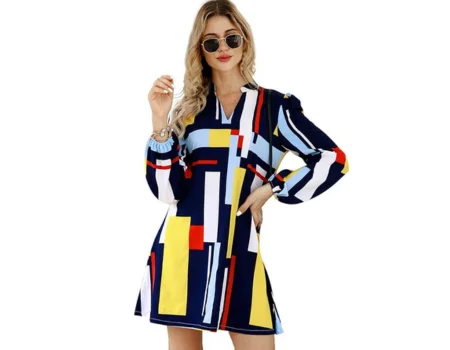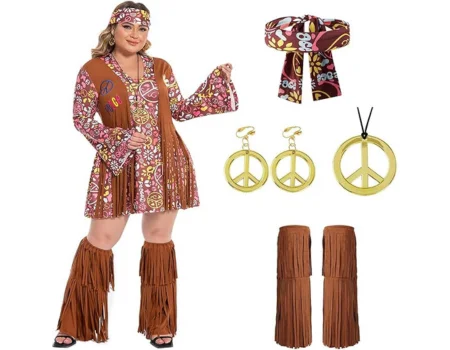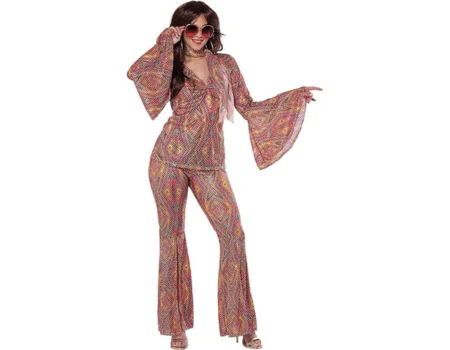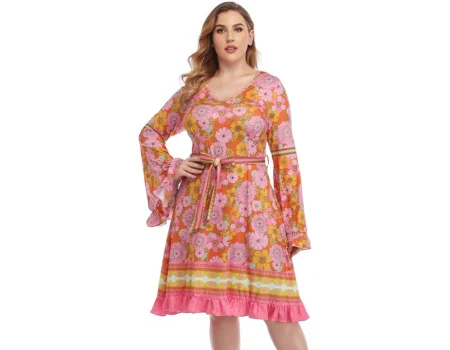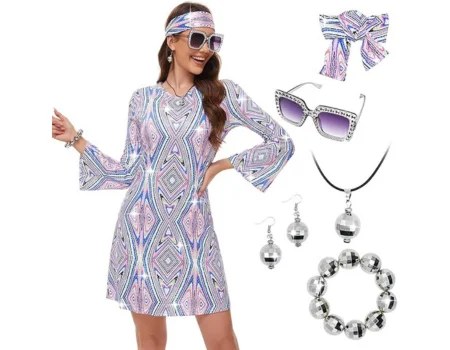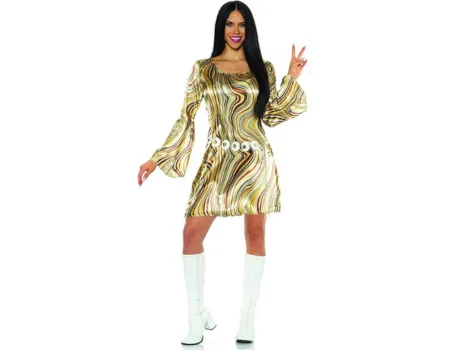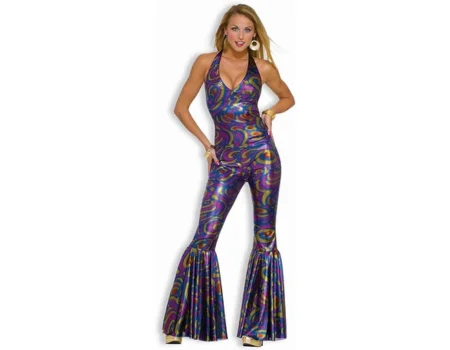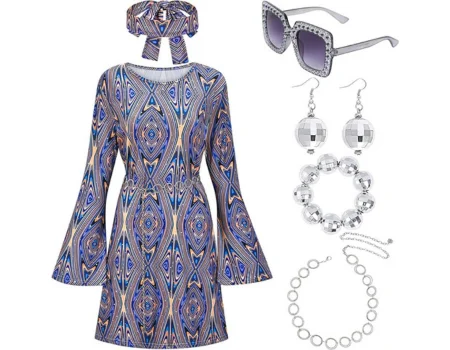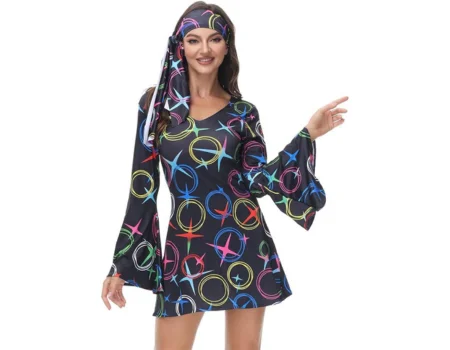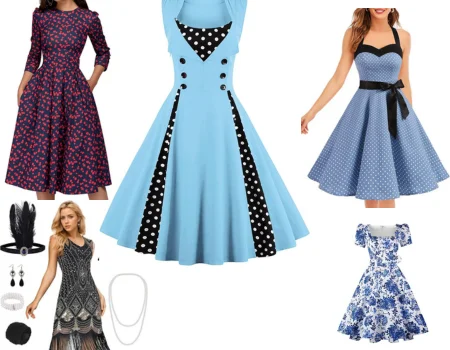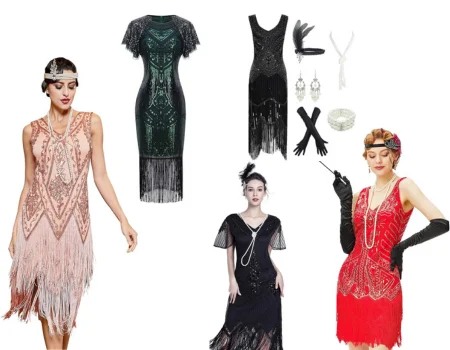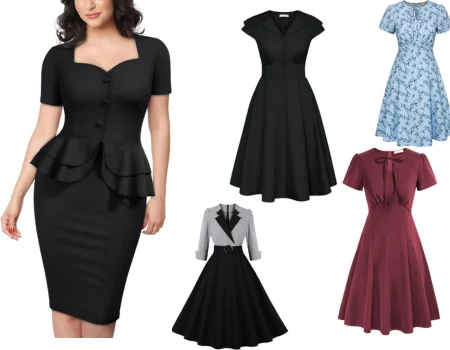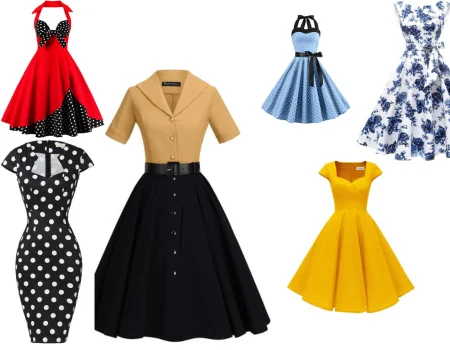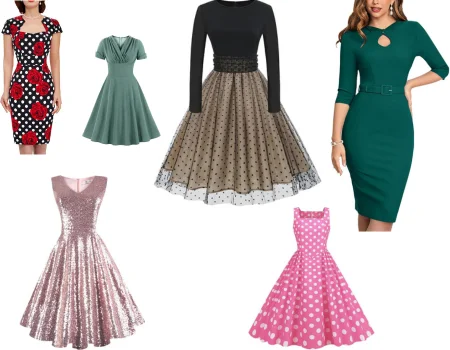The 1970s was a vibrant and eclectic decade for fashion, marked by an array of styles that reflected the social and cultural changes of the time. From the free-spirited bohemian looks to the glitzy glamour of disco. Find the perfect dress for you in our store.
Catalog of 1970s Dresses
1970s Dresses: A Journey Through Bohemian, Disco, and Glam
The 1970s encapsulated the era’s diverse and dynamic spirit. This article will explore the various styles, key characteristics, and cultural influences that defined 1970s dresses.
The Cultural Context of 1970s Fashion
The 1970s was marked by significant changes, with movements fighting for civil rights, gender equality, and a rising environmental consciousness. These social changes influenced the fashion of the decade, leading to an acceptance of individuality, a more relaxed approach, and self-expression. The rise of disco culture, along with the influence of hippie and glam rock, contributed to the era’s fashion.
Key Characteristics of 1970s Dresses
- Silhouettes: From tight disco dresses to loose, flowing bohemian styles, this decade saw a variety of shapes and silhouettes. Women had many choices, from maxi dresses to mini dresses, cocktail dresses, and more.
- Fabrics: Natural fabrics like cotton and linen played a key role in bohemian styles, while materials like polyester, spandex, and lycra were used for disco and glam styles. Evening dresses often featured sequins, metallics, and other eye-catching materials.
- Color and Patterns: Psychedelic patterns, earthy tones, and bold prints dominated these years. Floral and geometric patterns, as well as paisley designs, were also very popular.
Popular 1970s Dress Styles
- Bohemian (Boho) Dresses: Also known as “boho,” this style was characterized by a relaxed and free-spirited vibe. 1970s boho dresses were often made with natural fabrics, intricate embroidery, and fringe details, inspired by the hippie style of the 1960s.
- Disco Dresses: 1970s disco dresses were designed to dazzle on the dance floor, featuring tight silhouettes, deep necklines, and sequins or metallics. Popular styles included halter dresses, wrap dresses, and dresses with asymmetrical hemlines, all aiming to make a statement under the disco ball.
- Maxi Dresses: These dresses became a perfect choice for those seeking comfort and elegance for both day and night. Often adorned with bold patterns, maxi dresses featured long, flowing skirts and versatility for formal and informal events.
- Mini Dresses: Paired with go-go boots, mini dresses provided a unique look. While mini dresses gained popularity in the 1960s, they remained fashionable in the 1970s, offering a variety of silhouettes and vibrant patterns.
- Wrap Dresses: Popularized by designer Diane von Furstenberg, wrap dresses became a staple of 1970s fashion. This dress featured a front closure created by wrapping one side over the other and tying it at the waist. The wrap dress was known for its flattering fit and versatility, making it a popular choice for women of all shapes and sizes.
Key Designers Who Influenced 1970s Fashion
Several designers left a significant mark on 1970s fashion, creating styles that continue to influence modern designs.
- Diane von Furstenberg: Best known for creating the iconic wrap dress, her designs conveyed comfort, elegance, and femininity.
- Halston: Known for minimalist yet glamorous designs, he became a fashion icon of the 1970s. Celebrities, wealthy individuals, and fashion enthusiasts loved his creations.
- Vivienne Westwood: A key figure in the punk and new wave fashion movements, she revolutionized the fashion scene in the late 1970s with her bold and rebellious designs.
Dresses for Every Occasion
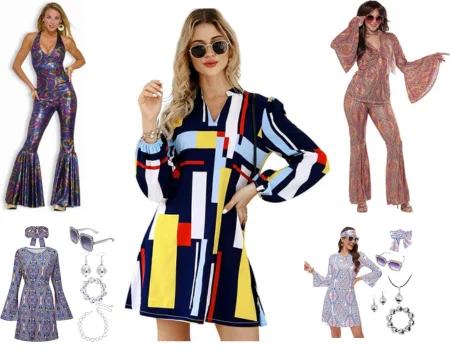
- 70s Party Dress: Party dresses of the 1970s were all about fun and flair, featuring bold prints, bright colors, and playful details like ruffles and bows. Popular styles included mini dresses, wrap dresses, and halter dresses.
- 70s Prom Dresses: Prom fashion in the 1970s saw a mix of traditional elegance and modern trends. Dresses ranged from floor-length gowns to more daring mini dresses, often using sequins, metallics, and other eye-catching materials for a glamorous look.
- 1970s Formal Dresses: Formal dresses of the 1970s were characterized by elegance and sophistication, often featuring flowing skirts, intricate details, and luxurious fabrics. The maxi dress was a popular choice for formal occasions, offering both style and comfort.
The 70s, a lasting fashion
The bold designs, innovative styles, and cultural significance of the decade have undoubtedly inspired contemporary designers in their diverse works. Key elements of 1970s fashion include:
- Boho Chic: For those who prefer a more relaxed and free-spirited style, bohemian fashion is perfect.
- Glam and Disco: Sequins, sparkles, and metallics are ideal for anyone looking for a fabulous party look.
- Wrap Dresses: A timeless piece that belongs in every woman’s wardrobe, the wrap dress is the epitome of a versatile and flattering garment.
Buying 1970s Dresses Has Never Been Easier
For those looking to buy retro 1970s dresses to complete their wardrobe, online vintage clothing stores offer a great option.
At Vintagestore.top, we’ve made it easy by gathering all the information you need and providing a selection of different types of 1970s dresses at great prices.
Now, all you need to do is choose the one that best suits your upcoming party or important event and add it to your wardrobe.
Conclusion
The 1970s was a decade of dynamic and diverse fashion, reflecting the social and cultural changes of the time. From the free-spirited bohemian styles to the glamorous disco dresses, 1970s fashion offered a wide range of options for self-expression and individuality. Whether you’re drawn to the flowing silhouettes of boho chic, the glitz and glamour of disco, or the timeless elegance of the wrap dress, 1970s fashion continues to inspire and captivate. The enduring appeal of 1970s dresses lies in their ability to capture the essence of a transformative era, celebrating freedom, creativity, and style.esencia de una era transformadora, celebrando la libertad, la creatividad y el estilo.

